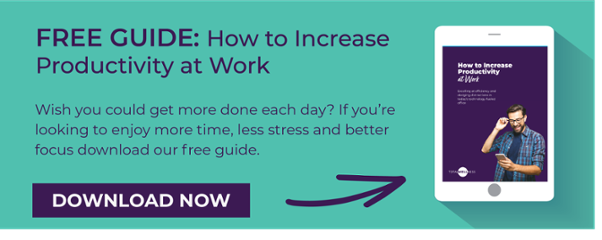 Do you get enough zzz’s? Odds are you—and your employees—probably don’t. But what’s the big deal with being a little drowsy at work? There are actually quite a few negative outcomes of sleep deprivation. There are also plenty of things you can do to make sure you have a well-rested workforce.
Do you get enough zzz’s? Odds are you—and your employees—probably don’t. But what’s the big deal with being a little drowsy at work? There are actually quite a few negative outcomes of sleep deprivation. There are also plenty of things you can do to make sure you have a well-rested workforce.
At Work
Some of the negative consequences of sleep deprivation are seen at the workplace. It’s estimated that fatigue-related production loss is close to $2,000. This is due to mistakes that are made because employees' minds are quite as sharp on fewer hours of sleep.
Similarly, when you don’t get enough sleep, it’s very easy to become tired and crabby. Workers in a bad mood don’t work well together. This lack of teamwork can also hurt your production levels.
Finally, it’s said that back-to-back shifts on 4-5 hours of sleep a night lead to characteristics similar to those of legal drunkenness! If you frown upon your employees coming to work under the influence, you should definitely encourage them to come to work well-rested, too.
In Your Body
Aside from production level issues, lack of sleep can cause a variety of physical health issues too. Perhaps the most common is that fatigued employees get sick more easily and more often because their bodies aren’t as equipped to fight off infections.
Sleep deprivation is also obviously linked with low awareness, leading to the detrimental mistakes we talked about earlier. It can also be attributed to higher risks of stroke, obesity, diabetes, anxiety, depression and heart disease. All of these things can spell disaster when they infect your workforce.
So you know your employees need sleep, but you can’t go home with them to make sure they follow curfew. What can you do?
Educate
One thing you can do is educate your workforce on the importance of sleep and the dangers of sleep deprivation. It’s important that they understand exactly what the issue is and why it relates to them. This can be done with office-wide memos, meetings, fliers or even more creative campaigns.
No matter what you use, try to relate the educational material to the needs of your workforce. For example, if most of your employees work remotely, fliers at the office probably won’t help much.
Schedule
Making a schedule cohesive with sleep patterns is something you can do to directly affect how much sleep your employees get.
- Avoid scheduling shifts longer than 12 hours
- Schedule night shift staff with plenty of days off to catch up on sleep
- Clearly communicate how plugged in your team needs to be away from the office
- Schedule downtime between long shifts
- Don't spread your employees too thin
- Avoid sending employees on back-to-back business trips
Promote Healthy Habits
In your wellness program, you should be promoting a variety of healthy habits. Many of these habits can help your workforce get a good night’s sleep, so tie them together. Try to promote things like minimal caffeine intake, getting exercise (but not too close to bedtime), and winding down at the end of the day.
You can also suggest some logistical changes like:
- Don’t bring your phone to bed
- Remove light from the room
- Wear earplugs or use a fan to cover up distracting noise
- Find the perfect comfortable temperature to fall asleep in
- Go to sleep and wake up at similar times every day (even when you’re not working!)
In the end, sleep impacts every aspect of our lives. It’s important to understand that a lack of sleep can lead to a host of negative outcomes. Try to learn the benefits of a good night’s sleep and educate your employees. Promote healthy habits and a sleep conducive schedule to help them hit the hay the right way.



